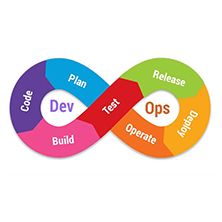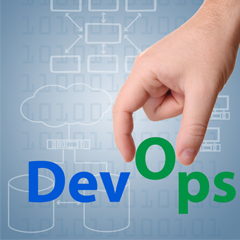The DevOps phenomena is surpassing all the hype; it is now in the action mode. Slowly but surely, organizations are realizing its true potential, which is to improve collaboration between developers and operations for faster release cycle, performance, quality, and profitability.
Companies like Amazon, IBM, Netflix, Adobe, Sony and many more have successfully leveraged from the DevOps approach.
Organizations, that have been successfully implementing DevOps are the ones that have realized the opportunity and acted upon it. For them, the transition did not just happen at the technical ground, it happened at many levels.
But for many, DevOps is still a tall order. In order to succeed in a DevOps environment, organizations must provide an engaging environment, access to knowledge when people need it, and freedom. Team members must be empowered to discuss and clarify their roles, responsibilities and interdependencies, so they can act confidently and quickly. At its core, it is about collaboration, culture and teamwork.

Openness to change:
One thing everyone agrees on is that DevOps success does not solely depend on technical skills, it is also about a cultural shift. Organizations that have openly accepted and realized this fact are making the stride easily.
Foster a mind shift and give space to people to ask questions so that they can make an easy transition. Empower them with a sense of purpose. You may face a bit of firefighting in the due course, but that is fine. Parallelly, you will also learn a lot. And, that will help you produce better business results.
“To successfully implement continuous delivery, you need to change the culture of how an entire organization views software development efforts.” – Tommy Tynjä, Diabol AB
Focus on business values:
It is not a good idea to get caught up in attraction. Successful organizations have identified business values that they want to achieve with DevOps implementation rather than just focusing on mere feature benefits. DevOps is about getting the business to understand the value of systems and services, and to think more carefully about what activity is creating benefits.
You must focus on implementing DevOps that would solve your real problems and provide real business value.
“Deployment celebrations should be about the value of the new features, not joyous relief that nothing went horribly wrong.” – Rebecca Parsons, ThoughtWorks
Make people more efficient:
People are key contributors to your organization’s productivity. It is important to inspire confidence among them for successful adoption. Streamline the process and bridge organizational silos permanently to remove upcoming hurdles. Focus on removing complexity that does not add value to the organization. Channelize people who can handle the change and train them to easily cope with the shift.
The core purpose is to make people more efficient and smarter to execute the tasks rather than bombarding them with unnecessary pressure. A DevOps organization and an agile mindset can mitigate collaboration challenges and ultimately break down the developed silos, helping you in development and operations roles to start functioning as an integrated team.
“To implement DevOps, you need to enable collaboration across functional boundaries. Here, people are key.” – Olivier Jacques, Hewlett-Packard
Choose the right tools:
The DevOps paradigm is a big shift from traditional methodologies. It requires new tools to succeed. But, choosing the right tools is equally important to reduce any chaos. Under DevOps canopy, different tools are used. This includes project management, source code management, continuous integration, automation, code review, orchestration and logging tools. So, get a clear understanding of which tools are right for which category.
Take a hard look at your existing process and then decide where you want to improve.
Your ultimate tools selection should also align with your processes to make release cycle faster, highly automated, and seamlessly collaborative. Also, make sure your development and operations teams can harness all the tools in a meaningful and visible way.
“The most powerful tool we have as developers is automation.” – Scott Hanselman
Learn from DevOps results:
Creating a vision is important, but it’s not enough. Once you have reached an initial level of DevOps transformation, you must analyze the received results. Establish a track record of improvements you are receiving and gradually increase the pace of change. Get feedback across the board, make changes if necessary and adjust in small steps.
Continuously learn and reflect what works and what does not. And, keep the momentum going.
“When you have mastered the principles of continuous integration and release automation, and adopt your own practices, you quickly recognize that there will be always something to improve further.” – Eike Thienemann-Dehde, CoreMedia
DevOps is a versatile approach; you can pick the approach which fits your purpose and environment. The success depends on how you build your culture and mindset. But, be sure to be open and ready for traditional shifts.
Want to know is DevOps right for my business? Read on…

Shashin Shah has been an expert in the Information technology field for more than twenty years. His experience globally and in the US, spanning across several industries has greatly contributed to his unparalleled skill set. Currently, Shashin is working as Chief Business Officer at DTES division of Happiest Minds, where he is primarily handling Pimcore Global Services. Pimcore is 100% open source consolidated platform for PIM, MDM, DAM, WCM & Ecommerce.








